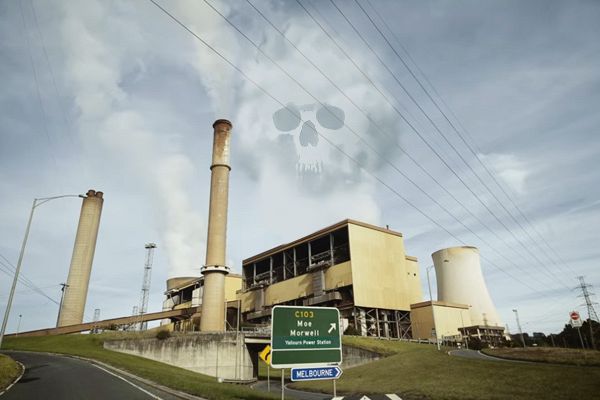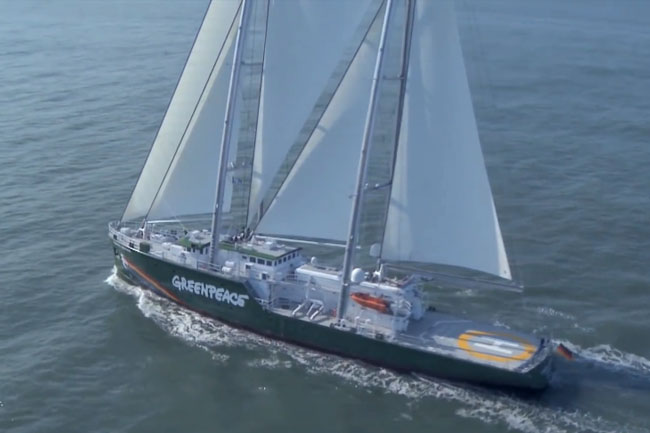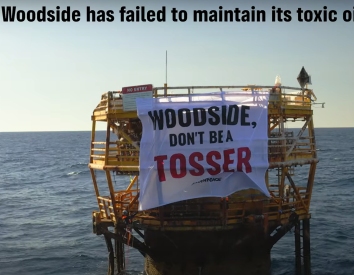Toxic emissions from burning coal can cause serious health damage to not only the environment but to all humans, including the unborn, writes David Ritter.
A FORTNIGHT AGO, Greenpeace released the first-ever national investigation into the health impacts of pollutants from coal-burning power stations in Australia.
The central finding was that every year, 800 Australians – roughly the equivalent of two full Boeing 747s – are killed by air pollution from coal-burning power stations. This death toll is eight times greater than the average annual of fatalities from all natural disasters combined.
The study shows how toxic particles from coal-burning power stations spread hundreds of kilometres, drifting across major Australian cities, bringing illness and death. These invisible pollutants can get into our brains and our lungs.
I’ve had lots of conversations about the report since it was released and people are genuinely shocked — by the numbers of dead and harmed; by the geographical reach of the deadly pollution into our suburbs and our cities; and by the dismal truth that much stricter air pollution standards have been adopted elsewhere in the world, including the European Union, the USA and China.
But it is when you talk about the impact of air pollution from coal-burning power stations on children and the unborn that the shock deepens to anger. The toxic pollutants from these stations can reach babies in the womb, contributing to developmental abnormalities like lower birth-weight. And thousands of asthma attacks in children and young people can be attributed to the pollution from coal-burning power stations every year.
Professor Fiona Stanley is a former Australian of the Year and National Living Treasure who has devoted her life to the health and wellbeing of children and mothers. In Professor Stanley’s assessment, ‘the burning of coal is our biggest global health disaster’. In a foreword to the report, she describes government support for burning coal as the equivalent of ‘writing out prescriptions to maim Australian childrens’ brains’.
She explains:
Australians need to know that we have 22 active coal-burning power stations. Whilst most are not in cities, they are close enough to them to damage the health of residents. The diagrams in this report show how far the particulate matter, nitrogen and sulphur dioxide can travel, with levels way above those considered safe by international standards.
Australians need to know that stations also emit toxic chemicals such as mercury, arsenic and lead. ...these all cause brain damage in young children and teenagers whose brains are still vulnerable, particularly mercury and lead. They are known to cause intellectual disabilities and in the most severe exposures, cerebral palsy and birth defects. This vital information needs to get to the decision makers in our state and federal governments whose responsibility it is to enable, not disable, the healthy development of our children.
The shock-turned-anger at business and political culpability for the harm to our kids is there, too, in the reaction of former leader of the Liberal Party, Dr John Hewson, who wrote this scathing indictment:
For decades, too many children have started life at a disadvantage because of air pollution emitted from coal-burning power stations that is absorbed through their mothers while they are still inside the womb.
If our political and business leaders agree that our youth are a natural treasure and they must be protected, then cleaning up the skies so they are no longer born already impacted by dangerous pollution would be a good start.
It would be possible to mitigate the air pollution from coal-burning power stations, but the owners of the stations don’t want to spend the money on prevention and our politicians have failed to stand up to them. Australia’s 22 coal-burning power stations include some of the oldest and most polluting in the world.
Put in economic terms, the cost of pollution from coal-burning power stations is also stark. Independent actuarial modelling commissioned by Environmental Justice Australia – which has been doing great work on this issue for some time – found that the annual health bill from the impacts of air pollution from coal-burning power amounts to $2.4 billion on conservative estimates.
As Professor John Quiggin wrote in Independent Australia:
‘Australia can and should get off coal by 2030, without harming workers employed in the industry. In doing so, we will be saving both lives and money.’
The case against coal now contains a very long rap sheet of capital crimes against humanity and nature. Coal is the number one driver of global warming and all of the resulting severe climate damage. Coal is driving the collapse of the ice in the Arctic and harming babies in the womb in Australian cities. Coal pollutes our politics, our water and our air.
We need national air pollution standards in Australia now and our dirty, ageing, deadly fleet of coal-burning power stations should be retired without delay, making way for the clean energy that forward-looking modern communities and societies have already embraced.
David Ritter is an Independent Australia columnist and CEO of Greenpeace Australia Pacific, adjunct professor at Sydney University and an honorary fellow of the Law Faculty at the University of Western Australia. You can follow David on Twitter @David_Ritter.
Related Articles
- Clean air is a human right our government chooses to ignore
- Every day, coal is killing us
- How the fossil fuels industry taxes us to death — literally
- Coal or bust: How Abbott is stranding Australia
- The coming carbon nanotube energy revolution
 This work is licensed under a Creative Commons Attribution-NonCommercial-NoDerivs 3.0 Australia License
This work is licensed under a Creative Commons Attribution-NonCommercial-NoDerivs 3.0 Australia License
Support independent journalism Subscribe to IA.














